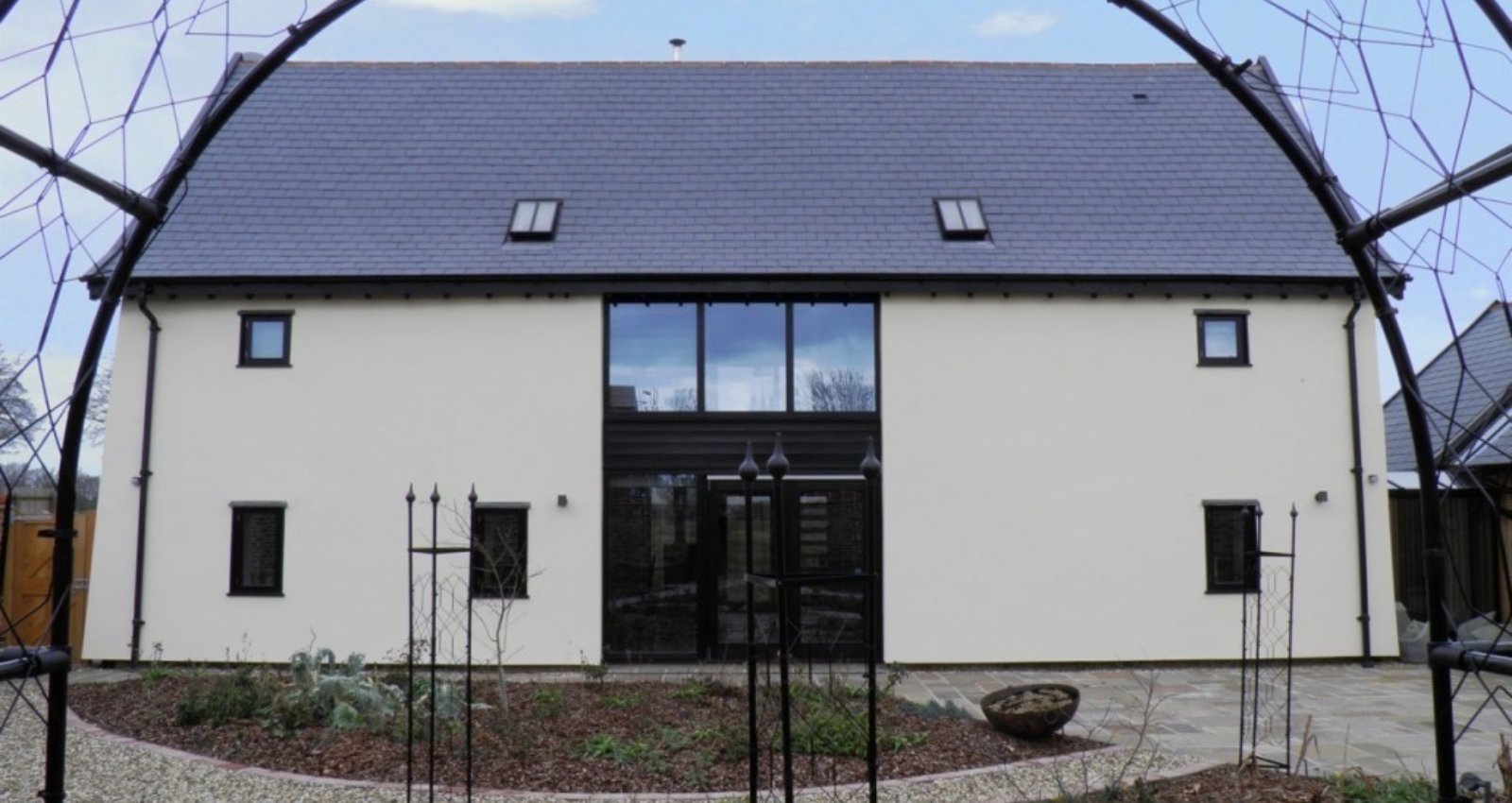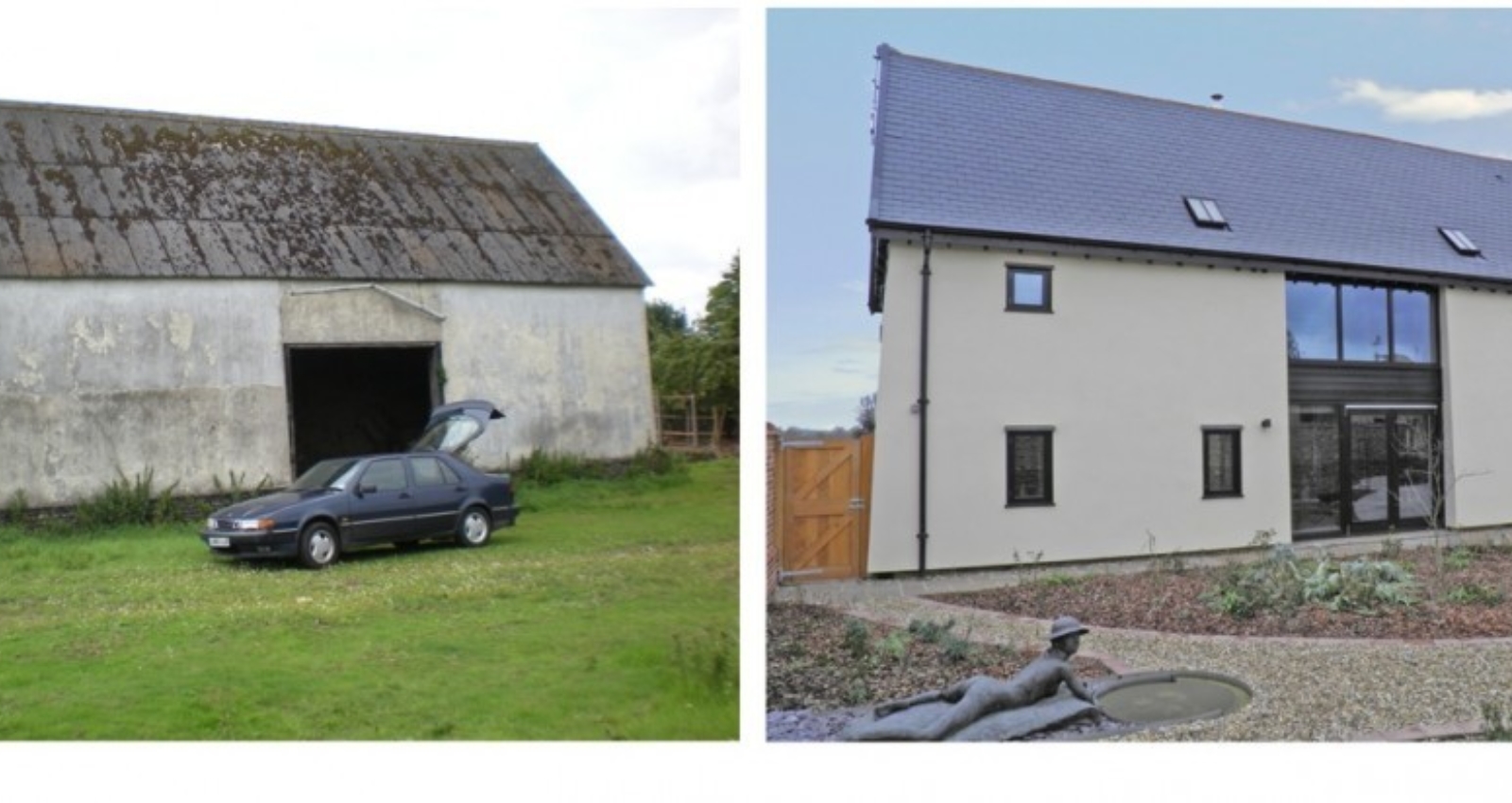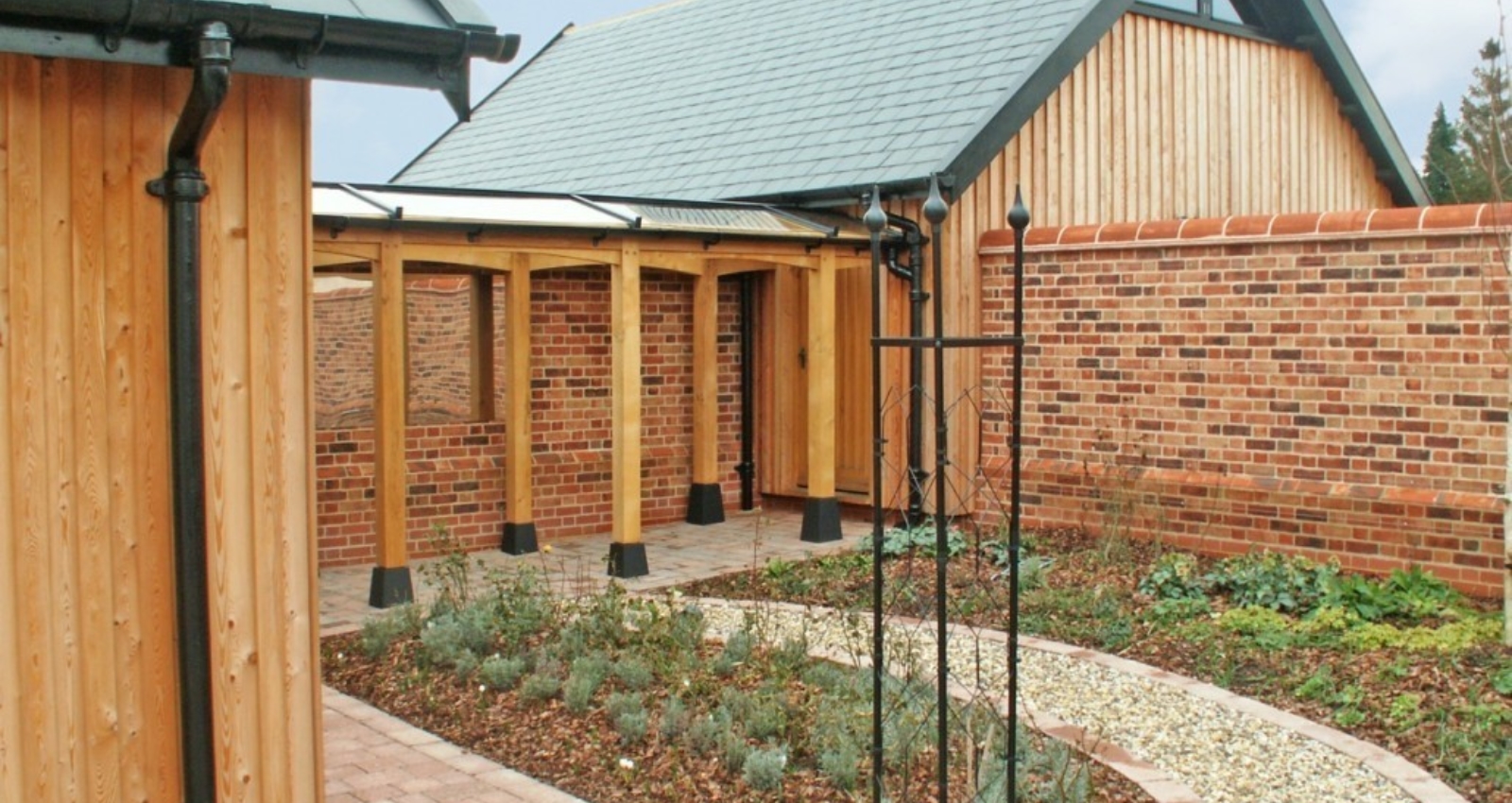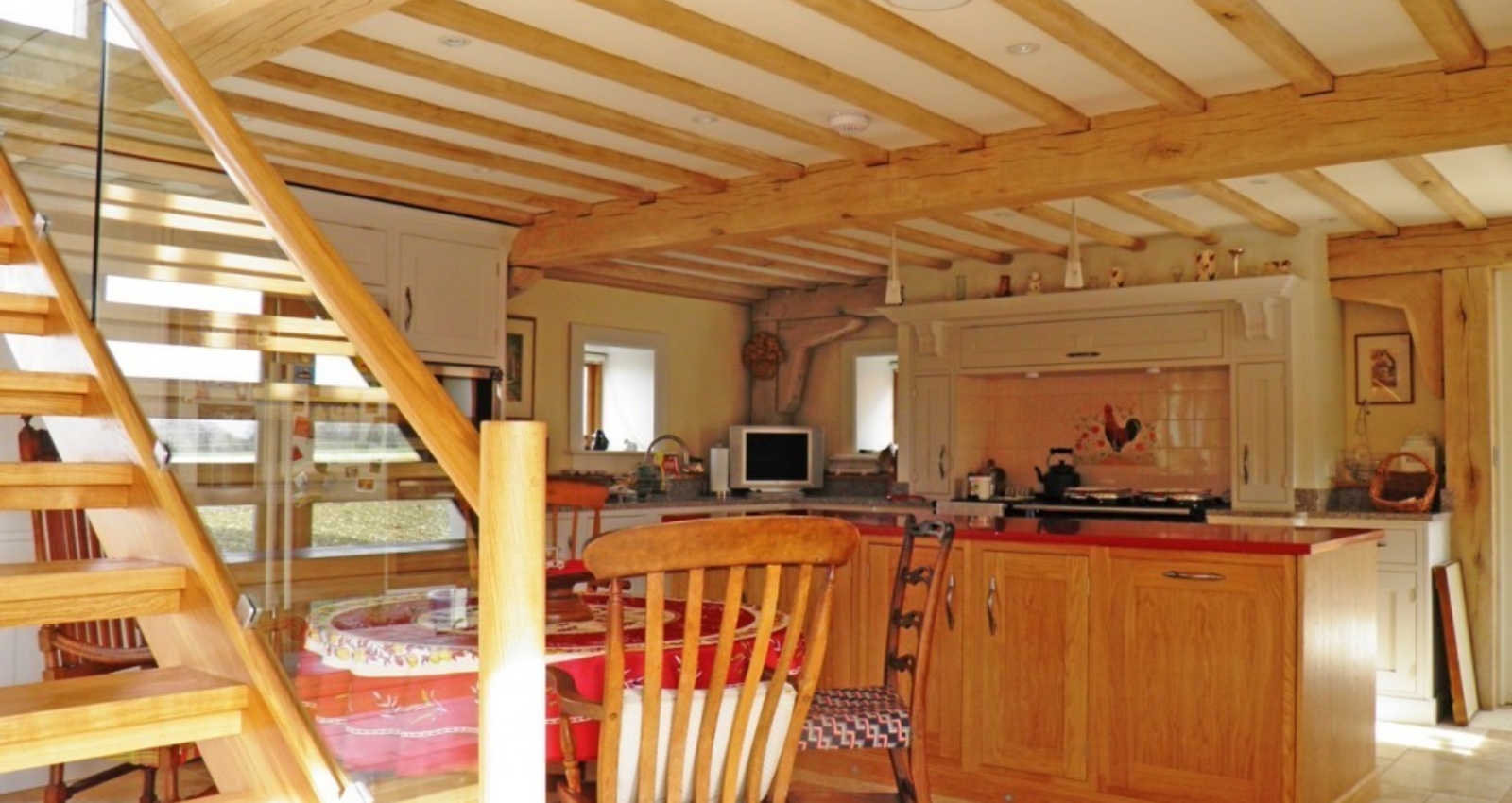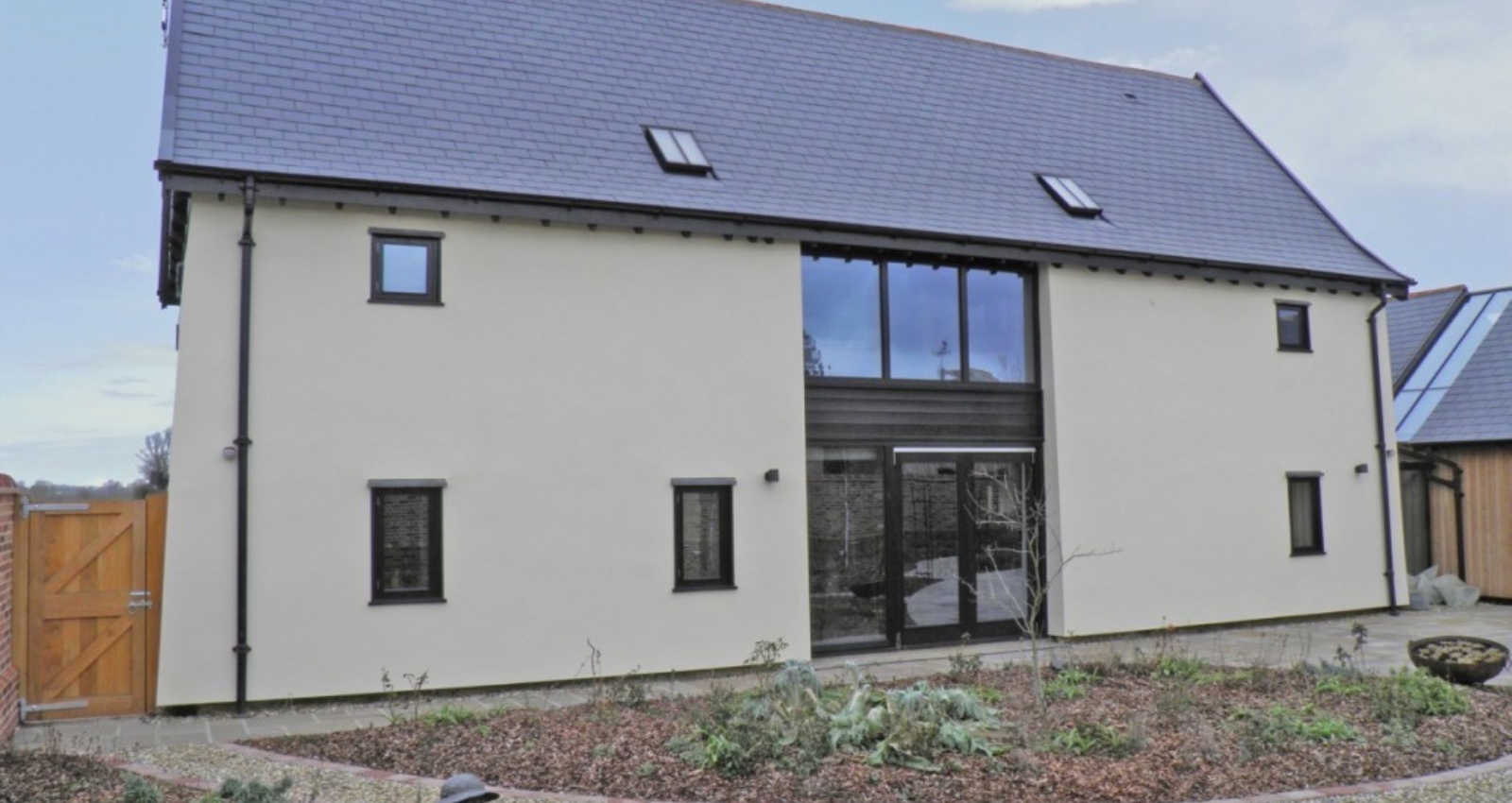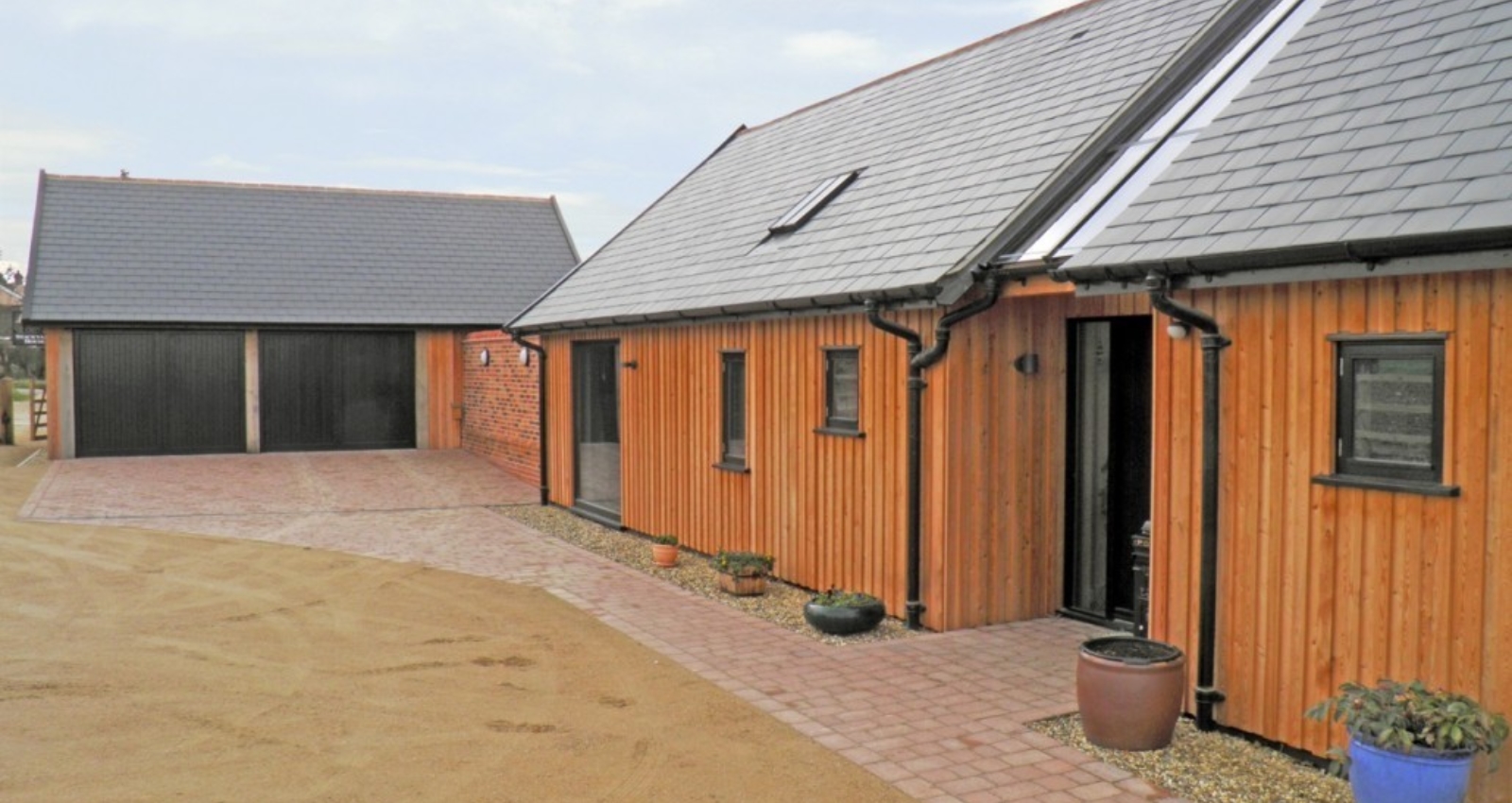Project Details
The building is a good example of a mid 19th C clay lump barn built of walls 360mm thick, sitting on a flint plinth. Over the years, the Barn has remained largely intact, retaining its original appearance. The 45 degree pitched roof structure using staggered butt-purlins, suggests that it was originally tiled rather than thatched, but at some time in the recent past it was re-roofed with corrugated asbestos sheeting.
The Barn is 15m in length by 6.9m in width on an east west axis and the walls rise to 4.2m at their roof plates. The large scale of the barn is very unusual for a structure of this type of fabric.
The conversion incorporates a new oak framed mezzanine to provide first floor bedroom accommodation, and a ground floor extension, set away from the Barn, but joined to it by small glazed link.
The very high thermal mass of the clay lump walls has been augmented by a breathable wood based insulation material applied externally, and this has been finished with a lime based render and limewash.
The roof has been overlaid with insulation and finished with natural slates.
The ground floor which had been concreted in the 20th C was taken up and a new insulated limecrete floor was laid, finished with natural stone tiles. The land around the building was re-graded and drained to restore effective breath-ability to the building.
The building is now heated by means of a ground source heat pump supplying underfloor heating to all floors. Two new woodburning stoves provide supplementary heating as well as enhancing overall ambiance.
A whole-house heat recovery ventilation system has also been installed, which, together with an underground rainwater harvesting unit and photovoltaic panels on the roof of an adjacent storage barn, have fostered and facilitated a philosophy of sustainability for the project.
The owners’ requirement for adequate storage space in the proposed extension, together with planning constraints and the necessity for very deep foundations, prompted the decision to build a basement floor beneath the whole of the footprint of the extension. This basement houses a plant room, wine cellar and general storage rooms.
The completed project provides a comfortable, attractive, sustainable dwelling for its owners, whilst ensuring many more decades of life for a rare example of Suffolk’s heritage
